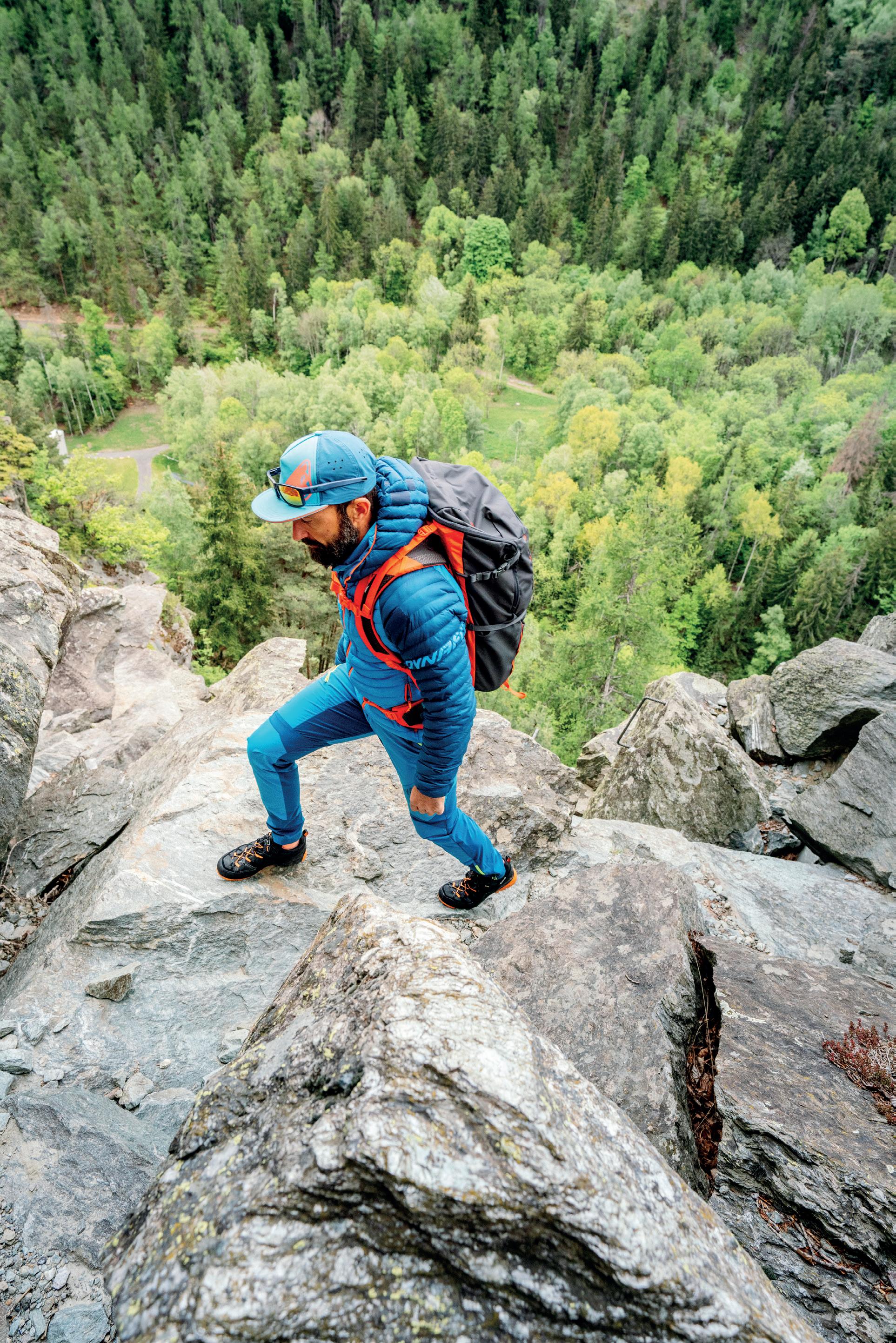CLIMBING SHOES A climbing shoe is the indispensable ally to guarantee confidence on holds. Shape, softness, closure system. How to move in this universe? The choice is strongly linked to the type of climbing (bouldering, crag, gym) and the more or less prolonged use that you will face. But first of all, you need to find the right product based on the level of experience and frequency of use. Beginner Novice climbers should prefer models that help the foot to work properly and that gradually develop the necessary muscles. Those who start climbing need a comfortable, basically rigid and supportive product designed to gradually adapt to something more performing. A straight and symmetrical shoe, with a neutral and flat shape, is perfect for becoming familiar with the holds. Avoid specific shoes but focus on all-round models with a relaxed fit. Do not listen to the advice of friends, and choose your normal size. Prefer comfort, you will have plenty of time to suffer.
Intermediate Are you looking for improvements on the wall? You can start choosing a balanced shoe that compensates for the level of performance with softness, with a tendentially asymmetrical and slightly arched shape. The first
factor will allow you to be more precise and effectively use the edges of the shoe, the second to optimize the thrust and power on the holds. If you mostly climb indoors, you will need a more flexible shoe that will allow greater feeling on artificial walls. If you climb on crags or on natural rocks, you will need a stiffer sole that allows you to save energy on long routes and to push better on smaller holds. To optimize performance, start considering one size smaller than your standard one.
Expert If you are a performing athlete, these notions will probably be your daily bread. Whether it’s boulders, crags or multi-pitch routes, you need to combine precision, adjustability and optimal grip. There is no doubt about this: the more arched is a shoe, the more aggressive it is, therefore suitable for an expert clim-
ber. The asymmetrical shape and a softer sole will guarantee excellent flexibility and greater sensitivity on micro holds. Carefully evaluate the choice of the size. Very often it seems that the more numbers you subtract from your shoes, the more you prove to be valiant climbers. In reality, exaggeratedly tight shoes can not only be harmful to the health of the feet, but also useless from the point of view of performance.
Velcro or laces? We could define the laces/Velcro issue as a personal preference. The substantial difference translates into practicality. Needless to say, if you have to wear and take off your shoes often (if you do bouldering or a lot of indoor climbing) the advice is to opt for Velcro closures that are easier and faster to wear. Shoes with laces require more preparation time, but allow you to tighten the shoe as much as possible with more precise adjustments and personalized adherence to the foot, which is only partially possible with Velcro.
















